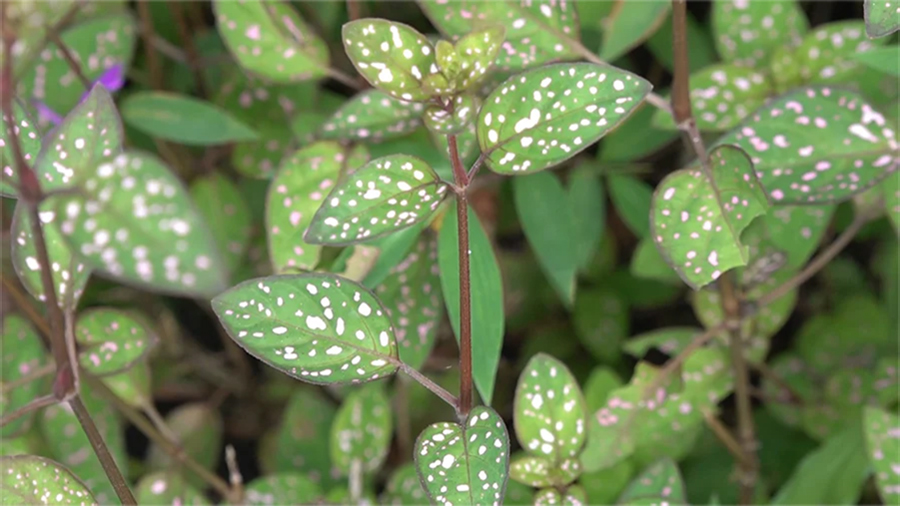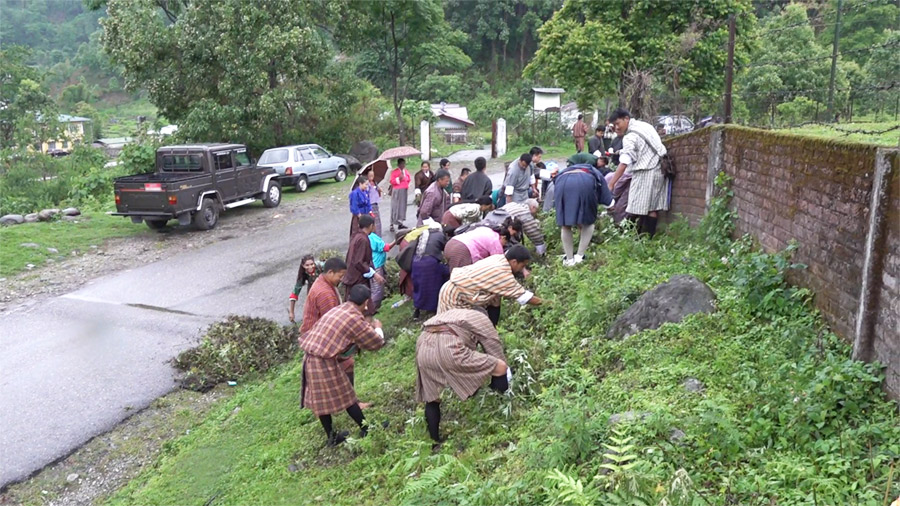
The polka dot plant, first reported in Khempagang village of Tading Gewog in October last year, has spread to five more gewogs in Samtse. Recognising the serious threat posed by this invasive species, the National Plant Protection Centre conducted a one-day awareness programme in Tendu on Wednesday during the International Biological Diversity Day.

According to the National Plant Protection Centre, the polka dot plant has spread to several gewogs in Samtse, including Tendu, Tashichhoeling, Norgaygang, Ugyentse, and Sangngagchogling.
To curb its further spread, the centre in collaboration with the Bhutan Food and Drug Authority and the National Biodiversity Centre, held an awareness programme to inform local residents and stakeholders about the characteristics of the polka dot plant, its impact on agriculture and the environment, and effective management strategies.
Many residents attending the awareness programme initially mistook the invasive plant for a simple flower and were unaware of the effective methods to eradicate it.
“Initially, we thought this plant was an indoor plant because it looked beautiful. However, we later noticed that wherever this plant grows, nearby vegetables and crops, like maize, do not grow well. We have tried uprooting and disposing of it, but it seems to grow back,” said Abhishek Subba, a resident of Tendu Gewog.
“We thought this was a flower and left it to grow. However, as time passed, the plant spread all over our houses. Even cattle do not like to eat it. When we tried to uproot the plants, they were very strong,” said Nauraj Sharma, another resident of Tendu Gewog.
“For me, this is new knowledge. I had seen this plant growing in many places but did not know it was an invasive species. Now that I am aware, as instructed, if I see this plant, I will uproot it, chop it, and bury it under the soil to stop its further growth,” said Tsheden, also a resident of Tendu Gewog.
Participants were also taught and actively engaged in effective management procedures to control the invasive plant.
“Our recent survey has revealed extensive growth of this invasive plant in many more gewogs within the Samtse district, posing significant challenges for farmers. That is why, in today’s programme, we involved key stakeholders such as gup, mangmi, tshogpa, and teachers and principals from various schools to sensitise them about the plant and its environmental impact,” said Nidup Dorji, a plant protection supervisor at the NPPC, Thimphu.
Besides Samtse, officials from the National Plant Protection Centre said that the invasive plant has also been observed growing in several areas of Phuentshogling and Gelephu recently.
Like Tendu Gewog, other gewogs plan to conduct similar programmes monthly to help remove the invasive weeds from their communities.
According to the centre, the plant is believed to be native to Africa, but it is unclear when and how it arrived in Bhutan. They suspect that the illegal transport of indoor plants may have contributed to its introduction.
Over 170 participants from various gewogs of Samtse attended the programme.
Passang Dorji, Samtse
Edited by Sherub Dorji









